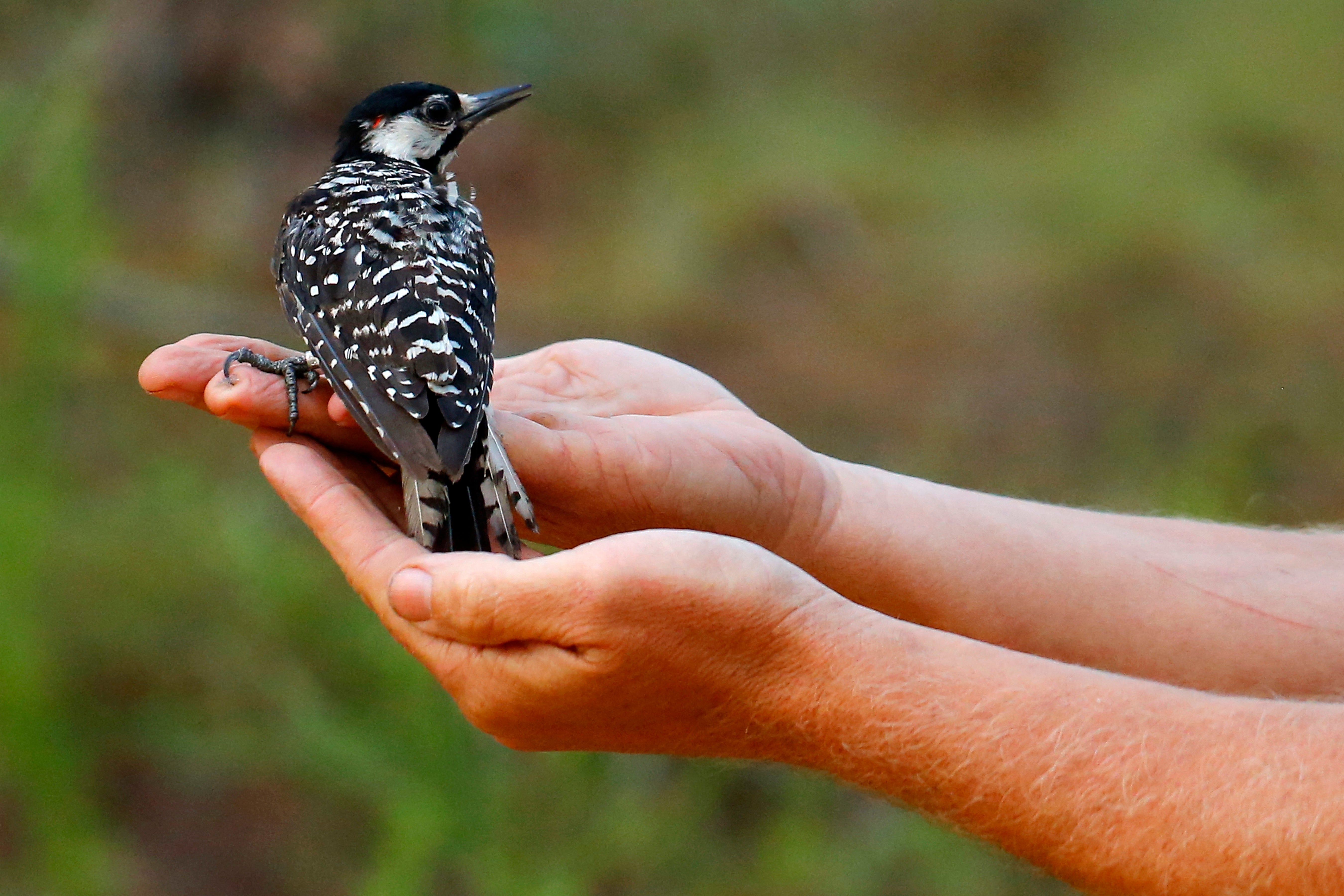Feds: Relax protections for woodpecker endangered since 1970
Federal officials say a woodpecker declared endangered half a century ago has recovered enough to relax federal protections

Your support helps us to tell the story
From reproductive rights to climate change to Big Tech, The Independent is on the ground when the story is developing. Whether it's investigating the financials of Elon Musk's pro-Trump PAC or producing our latest documentary, 'The A Word', which shines a light on the American women fighting for reproductive rights, we know how important it is to parse out the facts from the messaging.
At such a critical moment in US history, we need reporters on the ground. Your donation allows us to keep sending journalists to speak to both sides of the story.
The Independent is trusted by Americans across the entire political spectrum. And unlike many other quality news outlets, we choose not to lock Americans out of our reporting and analysis with paywalls. We believe quality journalism should be available to everyone, paid for by those who can afford it.
Your support makes all the difference.The red-cockaded woodpecker, a bird declared endangered in 1970 and surviving today in the scattered longleaf pine forests that remain in 11 U.S. states has recovered enough to relax federal protections on the species officials said Friday.
Although the U.S. Fish and Wildlife Service told landowners in April there was a chance of entirely dropping all protections for the species, it is instead proposing to list the cardinal-sized woodpeckers as threatened under the Endangered Species Act. It is, however, also requesting comment on whether to remove the bird from the list entirely.
U.S. Interior Secretary David Bernhardt and U.S. Agriculture Secretary Sonny Perdue were scheduled to make the announcement on Friday at Fort Benning, Georgia, one of 13 military installations working to conserve the species.
Their visit comes during a months-long push by President Donald Trump's Cabinet chiefs into battleground states, swing states and wobbling states where rival Joe Biden is making a strong play in the presidential race. Trump won Georgia by 5.1 percentage points in 2016, but some polls suggest a closer race this time, and it’s one of several states where Biden is upping his campaign spending.
“Partnering for conservation has improved the condition of the red-cockaded woodpecker. It also allows us to take this important downlisting step,” Bernhardt said in a news release.
Whether numbers of succeeds or not will depend on rules written to continue protections, said
The federal government spent $408 million on the species from 1998 to 2016, making it one of the most expensive on the endangered list.
Once found from New Jersey to Florida, west to Texas and north to Missouri, Kentucky and Tennessee, red-cockaded woodpeckers now live only in coastal states from southern Virginia to eastern Texas, and parts of Arkansas and Oklahoma. The birds get their name from red feathers along the sides of adult males' black caps.
The species is the only North American woodpecker that carves living quarters inside live trees, which takes years. And because the longleaf pines it favors were logged out and replaced with faster-growing pines, the birds' range nearly disappeared as the forests shrank from 90 million acres to about 3 million (36.4 million hectares to 1.2 million). Fire suppression in the remaining forests let other trees grow too close for the birds' comfort.
By the late 1970s, there were only 1,470 clusters -- breeding pairs and young males which live nearby and help their parents care for nestlings. Fish and Wildlife experts now estimate there are nearly 7,800 clusters.
Scientists credit the recovery to two programs developed after 1989's Hurricane Hugo destroyed 87 percent of the trees where red-cockaded woodpeckers lived in South Carolina’s Francis Marion National Forest. One installs prefabricated woodpecker houses that are set flush into tall pines, or drills cavities for the birds. Another moves young woodpeckers into areas where only a few adults live.
The government also credited safe harbor agreements, in which landowners can manage their land with minimal federal oversight if they agree to help a protected animal on it.
Other programs have added more than 1.3 million acres (526,000 hectares) of new longleaf pine stands in the past 10 years, the news release said. The total is now 4.7 million acres (1.9 million hectares), according to the National Resource Conservation Service.
Publication of the proposed rule and supporting documents in the Federal Register opens a 60-day period for public comment.
The government also is proposing a “special rule” that would protect current habitat, forbidding damage to trees with woodpecker holes, harassment of the birds during breeding season and the use of insecticides near clusters.
The downlisting proposal “is a testament that military and conservation goals are compatible,” said Col. Matthew Scalia, garrison commander at Fort Benning, in a statement.
Other military installations working to bring back the bird include Fort Bragg, which the late Republican U.S. Sen. Jesse Helms of North Carolina tried to get exempted from the Endangered Species Act because protecting woodpeckers interfered with military training.
One conservation problem: Red-cockaded woodpeckers need trees that are at least 60 years old and have heartwood that is not only free of sap but infected with a fungus that softens the wood for easier cavity-hollowing. To get the birds to use younger trees, biologists created woodpecker boxes, but found they had to be set into the trees in order for birds to use them.
Dave Tenny, president and CEO of the National Alliance of Forest Owners, noted in the news release that 360 million acres of U.S. “working forests” are privately owned.
“Private forest owners are proud partners in this conservation milestone, and we have contributed to the long-term health of the red-cockaded woodpecker," he said.
___
McConnaughey reported from New Orleans. Ellen Knickmeyer contributed from Oklahoma City.